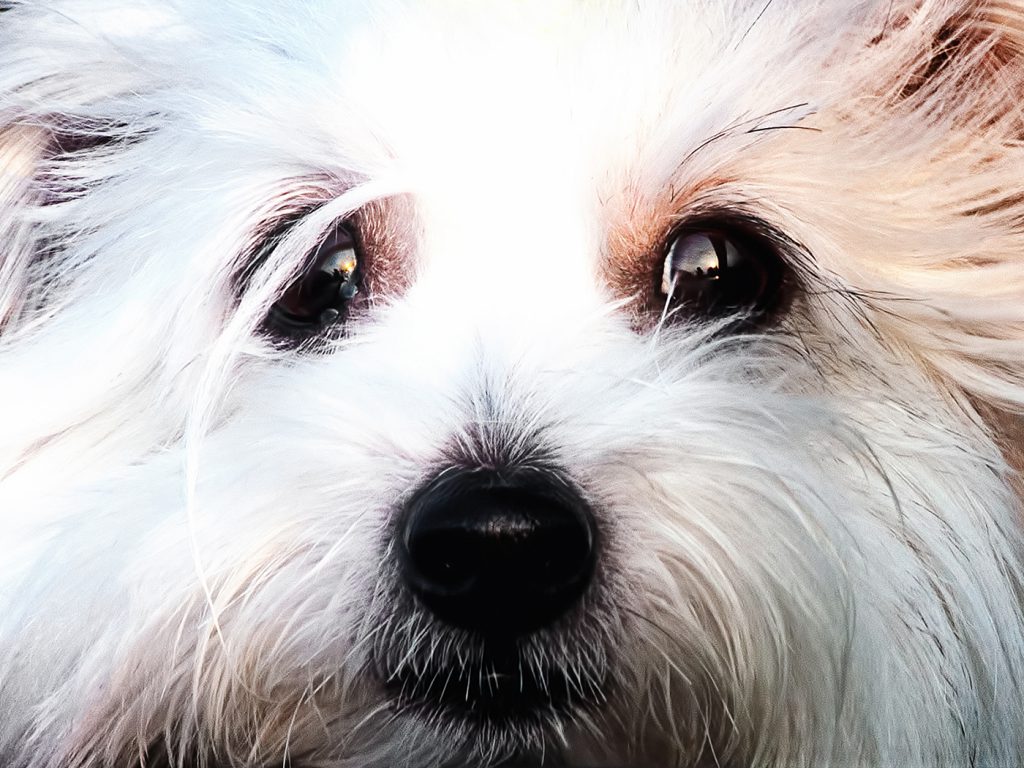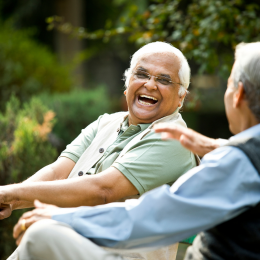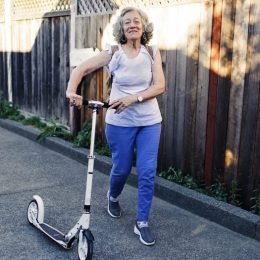What’s the Best Dog for You?
Pet ownership is linked to better health and an enriched life. Here’s how to pick your perfect companion.

Dogs are more than man’s best friend. They could be real lifesavers.
According to the Centers for Disease Control and Prevention, having a pet can help lower a person’s blood pressure, cholesterol, and triglyceride levels, which are important markers of heart health. Plus, all dogs require exercise, and that tends to get their humans moving too. In fact, one study found that dog owners are 34 percent more likely to achieve the recommended 150 minutes of exercise per week than non-dog owners.
The potential benefits aren’t just physical. There’s also evidence that the human-pet bond decreases stress and feelings of loneliness. Dogs may also help their humans make new social connections, particularly with fellow dog owners and other people you might encounter on a walk.
But before choosing your new family member, it’s important to consider your lifestyle, says Rachel Maso, an animal behavior associate with the American Society for the Prevention of Cruelty to Animals Adoption Center. For example, if you spend your days out and about, you may want a dog that loves long walks, like a Labrador. If you aren’t comfortable training a puppy, consider adopting an older dog. Often these mature pups have been trained and socialized already.
To help you find your perfect pooch, we’ve collected key stats on seven breeds the American Kennel Club recommends as top companions for older adults. They’re not too big, don’t require excessive exercise, and have friendly temperaments.
1. Cavalier King Charles Spaniel
This regal breed is affectionate, gentle, and eager to please. Cavaliers are good with children and other dogs, and generally bark only when they have a need to communicate.
- Size: Small (13 to 18 pounds)
- Typical lifespan: 12 to 15 years
- Activity level: Somewhat active. Satisfied with a good walk every day, Cavaliers do not require exhaustive workouts but will encourage you to move.
- Grooming: They need weekly brushing and shed seasonally.
- Similar breeds: Affenpinscher, English toy spaniel, Japanese chin, papillon
2. French Bulldog
You’d recognize Frenchies by their wrinkled, smushed face and batlike ears. They are playful, smart, and adaptable. They’re good with children but need supervision with other dogs. Though their stubborn nature can require a bit of patience, French bulldogs do respond well to training. They rarely bark but will be sure to alert you when visitors arrive.
- Size: Small (less than 28 pounds)
- Typical lifespan: 10 to 12 years
- Activity level: Not very active. This breed is easygoing and not terribly athletic. Short, brisk walks will keep them fit, and they’ll be content snuggled up on a warm lap.
- Grooming: Frenchies need a weekly brushing to keep their short coat shiny, and their nails grow fast, so you’ll want to stay on top of trimming. Otherwise they require minimal grooming and shed seasonally.
- Similar breeds: Boston terrier, bulldog, miniature bull terrier, pug
3. Coton de Tulear
These super-soft, white puffballs (coton means “cotton” in French) are bright, happy-go-lucky, and terribly charming. They respond well to training and bark when necessary. Cotons are good with children and other dogs. This breed is considered hypoallergenic, so it may be a good option if you have allergies.
- Size: Small (8 to 15 pounds; males can be slightly bigger than females)
- Typical lifespan: 15 to 19 years
- Activity level: Somewhat active. They’ll be delighted mainly to follow you around the house.
- Grooming: The coton is a minimally shedding breed that requires thorough brushing daily.
- Similar breeds: Bichon frise, Havanese, Lhasa apso, löwchen
4. Border Terrier
Border terriers are spirited, happy, and affectionate. They’re good with children but need supervision with other dogs. Obedient and good-tempered, they respond well to training and bark when necessary.
- Size: Small (12 to 16 pounds; males are slightly larger than females)
- Typical lifespan: 12 to 15 years
- Activity level: Very active. Borders are quick and agile. They need a good amount of exercise, which could mean long walks or lots of playing in a fenced yard, and they love to explore.
- Grooming: Border terriers have a water-resistant quality to their coat. The old coat must be stripped out when they shed, about twice a year, to maintain the water-resistant quality.
- Similar breeds: Cairn terrier, Lakeland terrier, Norwich terrier, Sealyham terrier, Welsh terrier
5. Whippet
Whippets, an English greyhound miniature, are calm, affectionate, quiet, and playful. And they’re fast: They can run at up to 35 mph. They’re good with other dogs but should be supervised with children. Whippets respond well to training.
Subscribe to our newsletter
It's quick and easy. You could be one of the 13 million people who are eligible.
Already a member? Click to discover our 15,000+ participating locations.
Follow Us
- Size: Medium (25 to 40 pounds; males are bigger than females)
- Typical lifespan: 12 to 15 years
- Activity level: Somewhat active. These natural athletes display spurts of energy followed by a lazy stretch: Think a few spirited sessions of fetch per week and then watching a movie with you. These pups also do great on agility courses—an opportunity for social dog owners to mingle.
- Grooming: They need occasional grooming and shed seasonally.
- Similar breeds: Greyhound, Italian greyhound, pharaoh hound, Saluki
6. Labrador Retriever
It’s no surprise Labs remain the most popular breed in the United States: They’re friendly, outgoing, gentle, and smart. They’re good with children but need supervision with other dogs. Labs are eager to please, so training comes naturally, and their barking is minimal.
- Size: Medium to large (55 to 80 pounds; males are larger than females)
- Typical lifespan: 10 to 12 years
- Activity level: Labs are extremely high-spirited and will thrive in a family that’s similarly active. If you love long hikes and lake swimming, this might be the pooch for you.
- Grooming: They need weekly grooming and shed seasonally.
- Similar breeds: Clumber spaniel, flat-coated retriever, golden retriever, pointer, Weimaraner
7. English Setter
Friendly, merry, and mellow, English setters are called the “gentlemen of the dog world.” They’re known for their mottled coat, which can range from white with light orange flecks to white with black flecks. English setters are eager to please and more or less bark only when necessary. However, these dogs require supervision when they’re around children and other dogs.
- Size: Medium to large (45 to 80 pounds; males are much larger than females)
- Typical lifespan: 12 years
- Activity level: Somewhat active. They need vigorous activity daily. English setters adore their humans and don’t enjoy isolation, so while exercise in a fenced yard will suffice, expect to play with your English setter.
- Grooming: English setters need to be brushed a few times per week to keep their medium-length coats neat, and they shed seasonally.
- Similar breeds: Chesapeake Bay retriever, Gordon setter, Irish red and white setter, Irish water spaniel, Spinone Italiano
Check Your SilverSneakers Eligibility Instantly
SilverSneakers gives you free, unlimited access to more than 16,000 gyms and fitness centers across the nation, plus classes and tools designed to keep older adults strong and independent. Check your eligibility instantly here.
Already a member? Get your SilverSneakers member ID and exclusive content by logging in to or creating your online account here.




